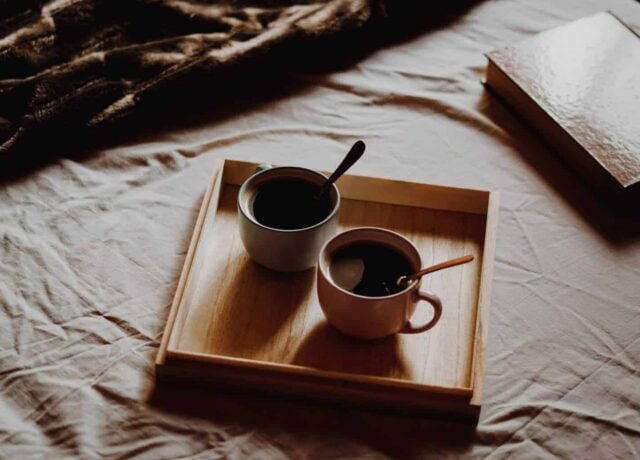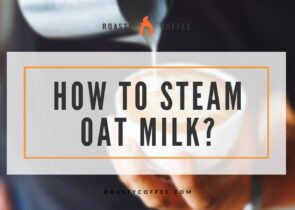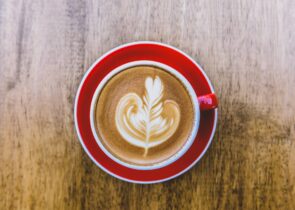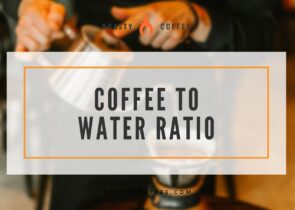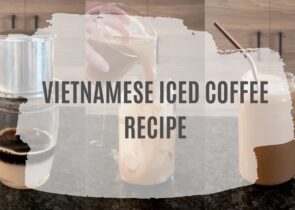With so many ways to brew a cup of excellent coffee, it can be difficult to decide which of the many coffee brewing methods out there are worth giving a shot. Besides, once you’ve put in so much effort to get your morning coffee ready, you want to be sure the result actually tastes good.
To make sure your daily cup is everything you hoped it would be, we’ve put together a simple guide to all the basic coffee brewing equipment and methods — plus a few you may not have ever heard of — to help you find the best one for your needs and taste.
For you, dear coffee enthusiast, we’ve broken things down into categories: espresso, drip, immersion, siphon, and stovetop. As you read about each brewing method, pay attention to the amount of time and effort it would take to brew fresh pots of coffee with each; this will help you make a decision that works best for you and your lifestyle.
We also strongly recommend investing in a good conical burr grinder to accompany your brewer of choice. Freshly and appropriately-sized ground beans can make or break just about any coffee-making tool. So, skip the pre-ground coffee and opt for whole coffee beans — you’ll be enjoying delicious cups of coffee every time. (For tips on grind size, check out our coffee grind size chart here.)
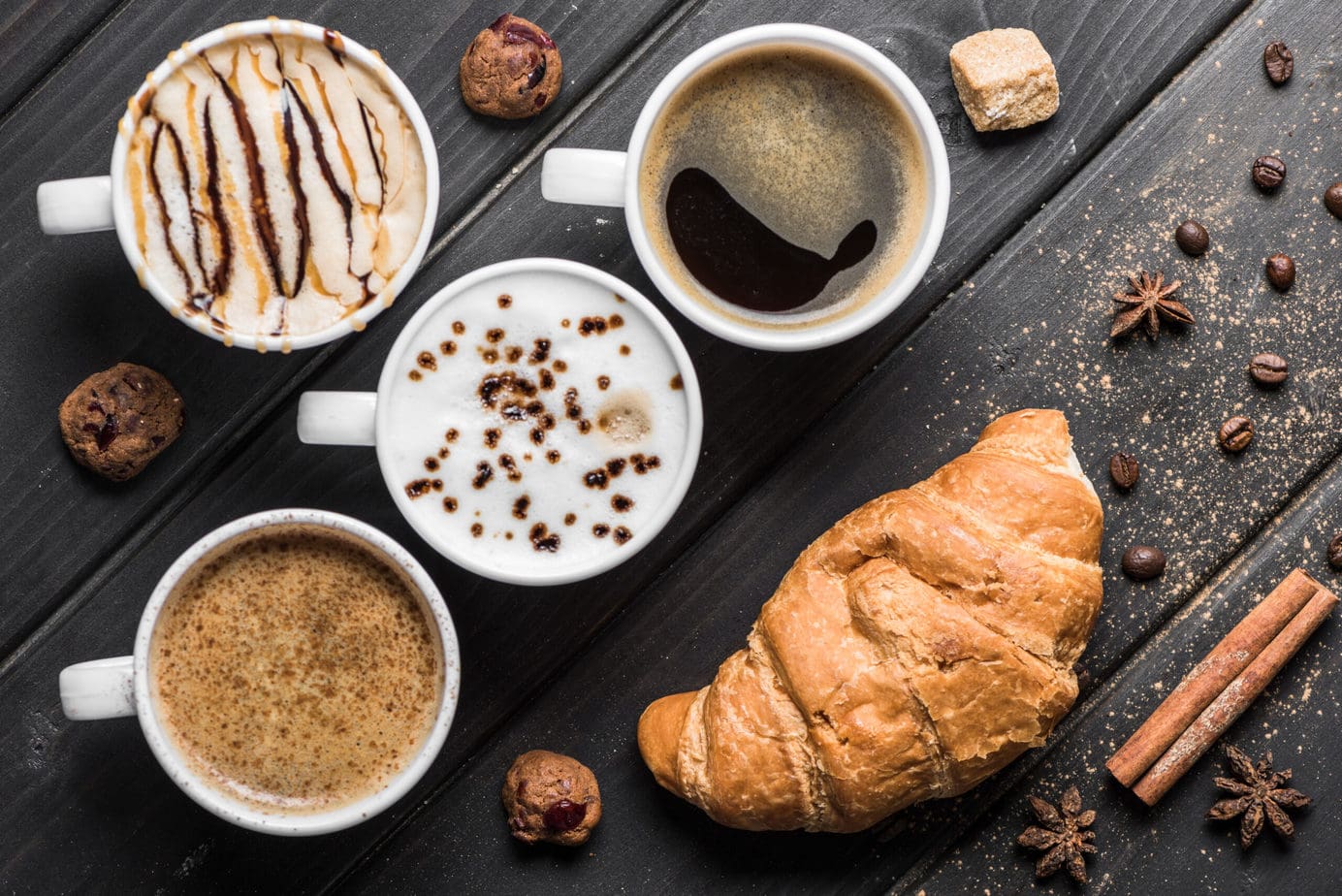
Espresso
First up is the base of just about every coffee shop specialty drink. From the classic cappuccino to the more niche Caffé Gommosa, espresso is at the heart of the brew. So, it’s only natural that we’d kick off this handy guide with the brew methods used to create espresso or espresso-like coffee.
Espresso Machine
Kit Needed:
- Espresso machine
- Tamper
This pressure-based brewing method results in strong, concentrated coffee perfection. While one of these machines is often quite a financial investment, it will likely pay for itself over time.
There is a ton of variety when it comes to espresso machines. Still, from bare-bones manuals to semi-automatics to decked-out super-automatics, they all essentially do the same thing: they all use high pressure to heat and force water through tightly packed, finely-ground coffee.
This method of brewing coffee is great for those looking to enjoy their favorite coffee shop-style drinks in the comfort of their own homes. It may take a bit of time and experimentation to find the right types of coffee beans, the ideal grind size, and master pulling the perfect shot, but in the end, the result is undoubtedly worth the work.
Plus, many espresso machines come with a milk frothing wand, which vastly broadens your drink options.
AeroPress
Kit Needed:
- AeroPress
- Mug
- Kettle
- Paper Filters
Unlike standard coffee makers that only brew one kind of joe, the nifty little AeroPress can brew single servings of regular and espresso-style coffee. And because it’s so durable, it’s the best choice for a traveler looking to take your affair with coffee on the road.
If you aren’t quite ready to dig deep into your pocketbook to splurge on an espresso machine, an AeroPress might just be the perfect coffee brewing tool for the meantime.
This is also a pressure-based brewing tool, but there is some room for experimentation because AeroPress coffee brewing is a manual process.
You can even use the inverted method for AeroPress coffee to accomplish more thorough extraction by combining immersion and pressure brewing methods.
More About Espresso-ing Yourself
An espresso machine, or an AeroPress, is your most likely choice if you’re going for espresso or something like it. But you can also get coffee with an espresso-like feel with a Moka pot — we’ll tell you more about that in our stovetop brewing section below.
Drip
If espresso isn’t what you are craving, then perhaps looking towards one of the various drip brewers might give you a brew with a homier feel.
Drip Coffee Maker
Kit Needed:
- Drip coffee brewer
- Basket-Style Coffee Filter
Standard automatic drippers are capable of producing medium-intensity brews, and though they aren’t the most versatile machines, they’re certainly reliable. And unlike many of the other options listed here, there are plenty of drip coffee makers made for large-batch brewing.
If you’ve ever walked into almost any American household, chances are you’ve seen one of these bad boys perched on the kitchen countertop. They come in hundreds of shapes and sizes, but each does the same thing: brews decent drip coffee.
These machines work by heating then distributing water over coffee grounds (a medium-fine grind size resembling kosher salt works best) via a showerhead. The grounds are saturated and the coffee, extracted via heat and gravity, drips into a carafe. And there you have it — a traditional cup o’ joe!
Pour-Over
Kit Needed:
- Pour-over filter
- Gooseneck kettle
- Carafe, Mug, or Cup
- Cone Paper Filter
Though it has a bit of a learning curve and requires more precision than other coffee makers, the pour-over method of brewing is a great way to enjoy your beans’ light, clean flavor profiles. Plus, they’re great if you just want something with a bit more flair than standard coffee makers! You can even take your pick between plastic, ceramic, or metal filters.
Pour-over coffee is a bit more involved than the other coffee brewing methods; however, it’s well worth the effort to get some seriously superior brews. For those of you looking to take your time with your morning coffee ritual, this is perfect for you.
To brew pour-over coffee, first line the brewer with a paper filter. Then, add a few heaping spoonsful of medium-fine coffee particles. Use a gooseneck kettle to pour hot water over the grounds, and clean and delicious coffee will drip into the carafe, mug, or cup below. Pour slower if you want a stronger flavor.
Chemex
Kit Needed:
- Chemex
- Gooseneck kettle
- Chemex paper filter
Do you like the sound of a pour-over, but prefer things to be a bit more streamlined? Try the Chemex brewer. The process is similar to using a pour-over filter, except you don’t need a separate carafe, as the unit is self-contained. This means you can brew bigger batches!
Just like a pour-over, the Chemex delivers a crisp, clean drink that highlights your ground coffee’s intricate flavor notes, but it uses slightly thicker filters, slowing down the brewing process. The slower process makes up for the lack of ribbing (as would be seen on a pour-over filter) and ensures thorough coffee extraction.
Vietnamese Coffee
Kit Needed:
- Vietnamese coffee press (phin)
- Sweetened Condensed Milk
- Mug or Cup (go for clear so you can watch your coffee as it brews)
- Ice (optional)
This particular cup of coffee can be a great choice for someone who wants something strong, rich, and heavy, but unfortunately, it’s not the most versatile coffee maker. If sweet simplicity sounds good to you, though, a Vietnamese coffee press just may be the coffee machine you need.
This coffee brewing method uses medium or dark-roasted, medium-coarse ground beans. We recommend preheating the phin with hot water and briefly blooming your grounds for the best results. The brew takes four to six minutes to finish, and it works by dripping the coffee through the filter and straight into your cup, which should be full of sweetened condensed milk. This gives you a uniquely sweet, decadent drink.
Cold Brew (Drip Brewer)
Kit Needed:
- Cold Brew Dripper
- Ice water
Cold brew lovers usually rely on the immersion method to make the chilled coffee drink, but it’s possible to create the stuff with a drip method, too. Cold brew coffee drippers are great conversations starters, and though they’re a bit fiddly to use, some can give you results in three or four hours rather than the typical 12 to 24.
The Yama model linked above is one of the most popular options for cold brewing because of its striking visual appearance. To use this coffee machine, simply fill the top chamber with ice water; the ice keeps the water cold and melts to continue supplying water, which drips down through the coffee grinds and eventually into a carafe at the bottom of the contraption. You will need to check the brewer occasionally to adjust the water’s drip rate as you’re making coffee, though.
This brewing method is a great choice if you’re after a more exuberant coffee taste, as it brings out all the complex, subtle notes of single-origin or specialty coffee beans.
Don’t Forget These Drippers…
If you think some sort of dripper could be your version of coffee brewing heaven, don’t forget about these other drip coffee makers.
Despite its name, the Clever coffee dripper primarily belongs to the immersion brew method family, but since it functions similar to a pour-over tool, it may be worth considering if you’re the kind of coffee artiste who needs a “best of both worlds” option.
Additionally, a percolator is classified as a stovetop coffee maker, but its brewing process mimics that of a standard drip brewer. It’s got a few other unique features, too, but we’ll get to those below.
Immersion
Next up is perhaps the most relaxed and low-effort version of coffee brewing: immersion. Immersion methods are known for their hands-off, easy-peasy nature. As long as you have some time and fresh ground coffee, immersion brewing is a breeze.
French Press
Kit Needed:
- French press coffee maker
The French press is a simple, self-contained brewing tool that’s a favorite among beginner and veteran coffee lovers alike. Pulling out a classic French press instead of an electric coffee maker is perfect for those who prefer a nice, full coffee flavor since the built-in, non-paper filter allows for a heavier, fuller cup than you can get with many other brewing methods.
Simply add coarse or medium-coarse grounds and hot water into the press, let the coffee-water mixture sit for a few minutes, then press the plunger down to strain out the grounds. You don’t have to limit yourself to hot water, either; if you’re a cold brew fan, you can let your coffee grounds steep in cold water.
All in all, if you are looking for a brewer that will make your coffee fuller and more flavorful, a French press is a great, affordable, and user-friendly option. Just note that a cheap coffee maker may have issues with gritty coffee, so do your research to make sure you buy a quality product.
Cold Brew (Mason Jar Method)
Kit Needed:
- Wide mouth mason jar
- Cheesecloth or alternative filter material
The cold brew mason jar method is one of the cheapest and easiest ways to get a great cup of coffee. Simply put coarse grounds and room temperature water in a mason jar, and leave the mixture in the refrigerator, ensuring the coffee extraction times are between 12 and 24 hours. Filter out the undissolved coffee particles with a cheesecloth, and you’ve got it — a nice, refreshing coffee concentrate that’s ready to be diluted with water or milk.
This full-bodied coffee is low acid and perfect for anyone who wants a no-fuss brewing method. Plus, you can make your joe ahead of time and keep your filtered brew in the fridge to keep your coffee routine worry-free and simple during the workweek.
Alternatively, if an immersion-style cold-brew sounds like your cup of tea but you want to explore other methods, you can check out the Toddy, OXO, or Filtron cold brew devices.
Clever
Kit Needed:
- Clever dripper
- Kettle (Gooseneck or standard)
- #4 Paper Filter
- Spoon, straw, or something else to stir with
The Clever coffee dripper is pretty unique as far as immersion brewers go because it combines the richness of full immersion brewing with the bright and clean coffee taste guaranteed by using a paper filter.
Essentially, this brewer is the perfect mash-up of a French press and pour-over filter, though, in terms of brew style, it leans more toward immersion-style brewing. That’s why we included it in this particular section.
Coffee Bags and Instant Coffee
Kit Needed:
- Coffee Bag or Instant Coffee
- Mug
- Kettle or Boiling Water
Coffee bags and instant coffee granules won’t get you any appreciative nods from your local hipster. However, both methods will save the day if you are pressed for time. Coffee bags just need to steep like tea, and instant coffee granules dissolve when you pour hot water over them. Yes, we know that’s a rather loose definition of immersion.
Even though coffee bags and instant coffee are super easy to use and convenient, their results aren’t as fresh and flavorful as brews made with other methods. So, if you expect coffee shop-quality brew, you probably won’t get it this way.
Note: Some variations of coffee bags may include coffee capsules and ESE pods. However, these would fall under the “drip” classification, as they are primarily used in single-serve coffee machines, such as Keurigs or Nespresso machines.
An Interesting Note About Immersion
There are a few more ways to make coffee at home that involve some immersion for the brew. If you are looking for a one or two-cup coffee brewing device, try checking out the AeroPress. Its versatility earned it a spot in the espresso section, but it can also be used immersion-style with extra water to make for more standard-strength coffee.
For something with a little more pizzazz that moves outside the usually simple nature of immersion brewing, check out the vacuum/siphon brew method below.
Vacuum/Siphon
Kit Needed:
- Siphon coffee maker
- Flame or stovetop depending on the model
Are you interested in having a coffee machine that screams “home-brewing science experiment” on your kitchen counter? Then a siphon pot is a perfect tool for you!
While this could be classified as either a stovetop or immersion brewer, we decided to give the siphon — a.k.a., the vacuum — its own category because of its unique mechanics. This brewer is exciting to use, but it requires plenty of caution and attention for safe and successful use.
In theory, using a siphon isn’t all that complex. Water boils in the bottom chamber, and vapor rises to the top chamber with the medium-coarse coffee grounds. A vacuum is created, and the freshly-brewed coffee flows back into the bottom chamber through a filter.
Why use one of these contraptions, you ask? Two reasons: they look cool, and the consistent heat and vacuum technology it uses highlight all the nuances in your joe’s flavor and aroma.
Stovetop
Now, we have some brewing methods that are perfect for the more down-to-earth types. These brewers come with a bit of an old-timey feel and require a bit of brew time, fresh ground beans, and a stovetop burner.
Percolator
Kit Needed:
- Percolator
- Stovetop
First up on our list of stovetop brewers is the good ol’ percolator. This brewer has been around for quite some time — since 1753, to be exact — predating the traditional drip brewer. The distinct taste of percolator coffee is often a family favorite, so if you’re looking for a brew that feels and tastes like something your grandma would make, check out this handy little machine.
The affordable and durable percolator works by heating water in the bottom chamber, then pushing the hot water up through the grounds in the top chamber and back down to be heated again. This cycle repeats several times until you’ve got coffee with a strong, almost harsh flavor.
The problem with using percolators is that they can be a bit inconsistent and the resulting brew can quickly become over-extracted, but if that suits you, go for it.
Moka Pot
Kit Needed:
- Moka pot
- Stovetop
At first glance, the Moka pot might seem to resemble the percolator. But this device actually produces a strong and full-bodied espresso-like brew with pressure instead of repeated filtration. The brewing process is similar, though. Water heats in the bottom chamber before flowing through coffee grounds and into a top chamber.
Moka pots are affordable alternatives for those who want to make espresso-based drinks. Though they don’t technically make espresso, they brew a drink with a much fuller body than thin, clean drip coffee, thanks to the pressure we mentioned earlier and the brewer’s hourglass shape.
These things are portable and can even be used over an open flame, making them perfect for camping. It doesn’t take too much time to get your joe, either — just about five minutes for a whole pot.
Cowboy Coffee
Kit Needed:
- Small Pot
- Campfire or Stovetop
- Measuring Cup
Cowboy coffee has a strong and gritty “frontier” vibe, and though it isn’t the best-tasting stuff, it’s a great way to brew for a crowd when you’re on a camping trip and want to limit how much coffee gear you pack…or if you just revel in the feeling of roughing it.
If you’re trying to make cowboy coffee, all you need to do is boil water over a fire and add two tablespoons of coffee for every eight ounces of water. Let the joe steep for two minutes, stir the grounds, then let the coffee-water mixture sit for two more minutes. After that, your coffee is officially brewed! Just add a sprinkle of cold water on top to help the grounds settle to the bottom of the cup, and enjoy!
Turkish Coffee
Kit Needed:
- Turkish Grinder
- Turkish Coffee Pot (Cezve)
- Sugar & Cardamom
Next up is Turkish coffee. This is essentially cowboy coffee’s more sophisticated older cousin, and it produces thick, bold, and rich coffee.
To make Turkish brew, combine hot water, loose coffee grounds, sugar, and cardamom in a special coffee pot called a cezve. Then, stir the mixture to create foam and prevent overheating and over-extraction.
Unlike cowboy coffee, brewing Turkish coffee requires beans with an ultra-fine grind, so much so that they’re almost powder-like in texture. For this reason, this drink has to be enjoyed slowly, and it tastes even better with good company. Everyone can sit around and make good conversation, sipping their coffee every once in a while so the grounds have time to settle to the bottom of the cup.
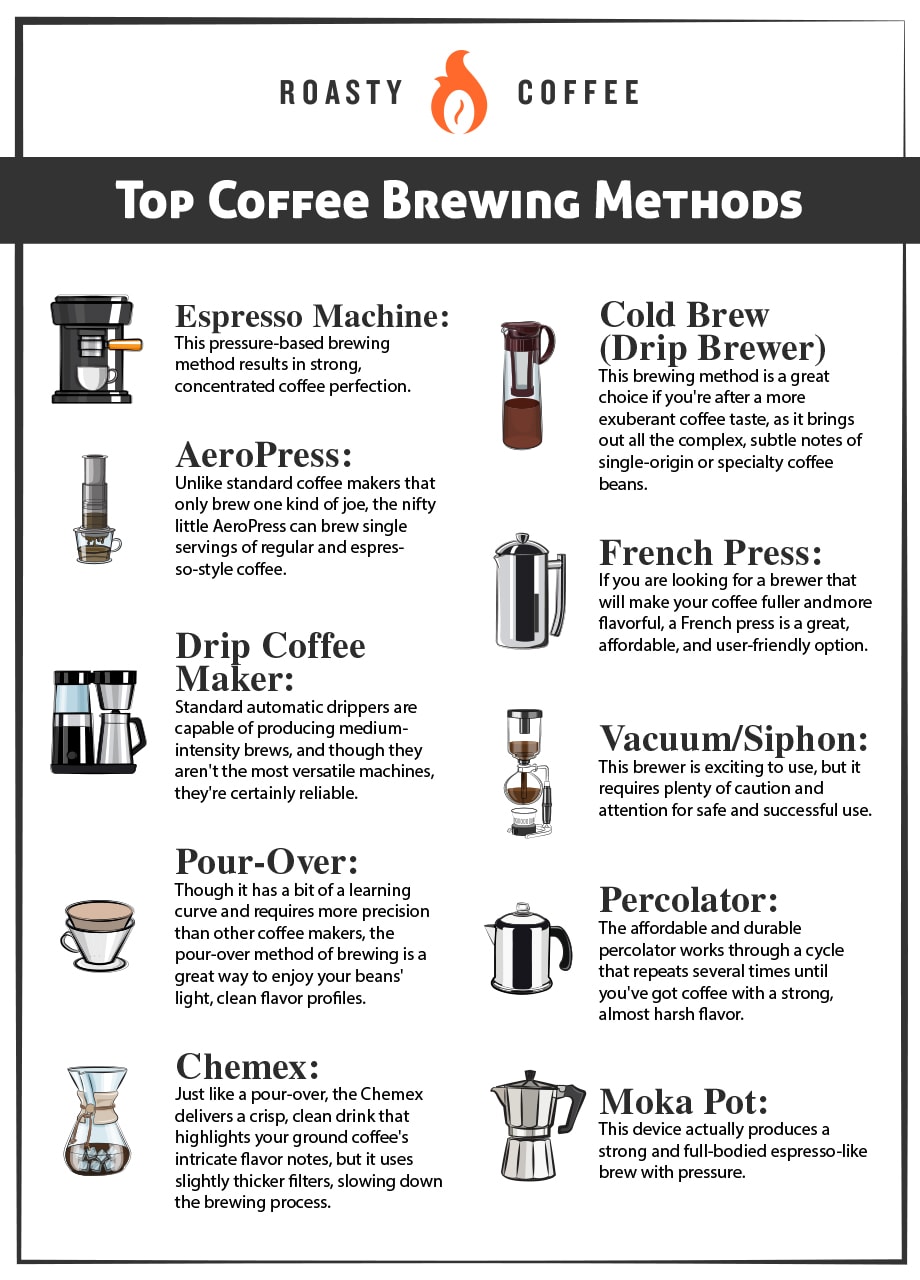
Frequently Asked Questions
Which methods are the fastest?
Short answer: instant coffee is the fastest method. Some brands only require lukewarm drinking water and something to stir in the granules. Bam — you’re done in less than a minute. But if you’re not quite that pressed for time and can manage to spare four or five minutes for your morning coffee, here are the quick-brewing methods you should check out:
Generally, automatic machines like drip brewers and espresso machines will heat water and brew more coffee faster than pretty much any manual brewer will. But with that said, you should also note that you get what you pay for in these categories. In other words, sure, some of these cheaper electric options can deliver your brew quickly, but it might not taste so great.
When you’re shopping around and on the hunt for something with both speed and quality, look for SCAA-certified drip coffee machines, which can brew eight cups of joe in only six minutes. For espresso machines specifically, opt for a mid-range semi- or super-automatic espresso machine; one of those bad boys will be perfect for getting a hot shot of rich espresso (with a beautiful layer of crema, of course) in well under five minutes.
When measuring the speed of a manual brewer, you will always need to factor in a few minutes — usually between two and four — for heating your water with a good kettle (or the microwave if you’re trying to be extra speedy). But once that’s been factored in, you’ll find that the AeroPress is the fastest manual coffee brewing method.
Once you have hot (but not boiling) water, the neat little gadget only takes about a minute to give you a piping mug of joe. And assuming you made the most of the water’s heating time by using that period to prep your coffee beans for brewing, you can be out the door, cup in hand and a smile on your face, in close to five minutes.
Which brew tools are the easiest to use?
Automatic drip brewers are pretty much dummy-proof. Thanks to their usually clearly labeled buttons (some models have just one button, making life even easier), all you’ll have to do is grind some beans, throw them into a filter, add water, and press brew. Done. Easy peasy.
However, if you want to put in just a little extra effort and have a bit more control over your brew, we have a few other recommendations for you to try.
The French press and mason jar cold brew method both require a coarse grind, a bit of time for the coffee to steep, and a little straining. (Psst…remember, if you’ve got a French press, you don’t even need a mason jar to try cold brew; the little coffee machine can make it, too!) Both methods give you the freedom to play around with the bean to water ratio, and you won’t ruin your coffee if you don’t have things measured out perfectly.
The Clever dripper is another gadget specifically designed to make brewing your coffee easy. Simply steep your coffee with the dripper and let your joe flow right into your mug. It’s completely fuss-free! And if you prefer something a little beyond the norm, the Vietnamese coffee press (the phin) works a lot like the Clever dripper and is just as easy to use.
What is the best brewing method for coffee?
Honestly, the answer to this one mostly comes down to personal preference. While one person may purchase coffee for brewing with a pour-over filter exclusively, another may find the crisp, clean taste of that joe thin and weak. On the other hand, you may enjoy the rich intensity of unfiltered coffee with breakfast while the person across the table from you can’t get past that kind of coffee’s slight grittiness.
Plus, some of the differences among coffee brewing methods vary depending on the product you choose to buy. For example, investing in an espresso machine that’s 500 or more dollars will probably give you better results than a lower-end model that’s under 100 bucks. Similar logic can be applied to automatic drip brewers, too.
In general, as long as you are using freshly roasted and ground beans (and are the correct grind size, too), you will be able to make potable coffee that is bound to genuinely suit someone’s taste. And if you find that what you’ve brewed isn’t for you, continue experimenting with beans and brewers until you find the right joe for you.
What is the healthiest way to brew coffee?
Black coffee, in general, has been said to boost both your immune system and metabolism while boasting several other health benefits. However, there are still some slight variances in what nutrients actually make it into your coffee that depend on the brew method and coffee machine you’ve chosen.
Recent studies have suggested that filtered coffee (i.e., not immersion methods) may boast more health benefits than its unfiltered counterpart (think cowboy coffee and French press). Specifically, regular filtered coffee consumers seemed to have lower mortality rates, especially in relation to cardiovascular events, than unfiltered consumers and those that don’t drink java at all.
But on another note, you’ll find that some people may have health concerns that are related to coffee, specifically those that have to do with its acidity or caffeine levels. If you’re someone concerned about your drink’s acidity, go for immersion-style methods; one of those will be a healthier choice for you. If you’re looking to control and monitor your caffeine intake, however, sip a nice chilly glass of cold brew.
What brewing method produces the strongest coffee?
Many coffee experts swear by the beloved French press when they want to make a brew strong enough to carry them through even the longest and busiest of days, and we have to agree.
As we mentioned above, the French press is a coffee machine that uses a metal filter instead of a paper one to separate the grounds from the brew, and that means pretty much all of the coffee’s natural oils — you know, the things that make coffee taste and smell absolutely amazing — stay in the cup. That means you get a fuller-bodied brew that’s more robust than something made another way.
Which brewing method takes the longest?
If your primary goal is getting coffee quick, we don’t recommend making cold brew via the immersion method!
Even though it’s simple — just leave your grounds steeping in the refrigerator and strain before sipping — you have to give your brew at least 12 hours to do its thing. Make it a full day if you want to ensure the beans are fully extracted, and your java is strong.
Aside from that, however, you’ll find that many of the brewing methods above, though different, take about the same amount of time to complete.
Explore our in-depth guide to discover which coffee brewing method boasts the longest preparation time.
Which brewing method yields the most caffeine?
You may not have realized it before, but the caffeine content that ends up in your coffee cup depends on several different factors. These include the coffee beans’ grind size, water temperature, and, our focal point of this article, the brewing method you choose to use.
Truthfully, we don’t have an exact answer for you; if you type this question into your Google (or Bing, whatever) search bar, you’ll get conflicting results. According to an Australian study conducted by Crema Coffee Garage and the University of Newcastle, brewing with an espresso machine is your best bet for ending up with more caffeine in your cup.
Wrapping Up
So there you have it! Our five main categories of brewing coffee are espresso, drip, immersion, siphon, and stovetop. Here’s an easy run-down of what category to be looking into based on your lifestyle and coffee preferences:
- Espresso: Do you prefer an extra-strong kick to get you moving in the morning? This brew type specializes in coffee concentrates that are great served alone or under layers of decadent milk and foam.
- Drip: One of the most versatile categories. From totally hands-off automatic drip brewers to precise, demanding pour-over brewing, there’s something in here for everyone.
- Immersion: Best for those looking for zero-learning curve solutions to brewing coffee. It’s all about the coarse grind and steep time here.
- Siphon/Vacuum: Love to feel like you are performing a science experiment? This unique brew method is a fantastic option if you’re looking for something that will bring adventure to your cup of coffee.
- Stovetop: This method always comes down to coffee grounds and hot water, with not much nonsense before, after, or in-between.
No matter how you make coffee, make sure to find joy in the coffee-making! Hopefully, this handy guide can help you select the perfect method for your morning (or afternoon, or evening) cup of coffee.
Happy Caffeinating!











